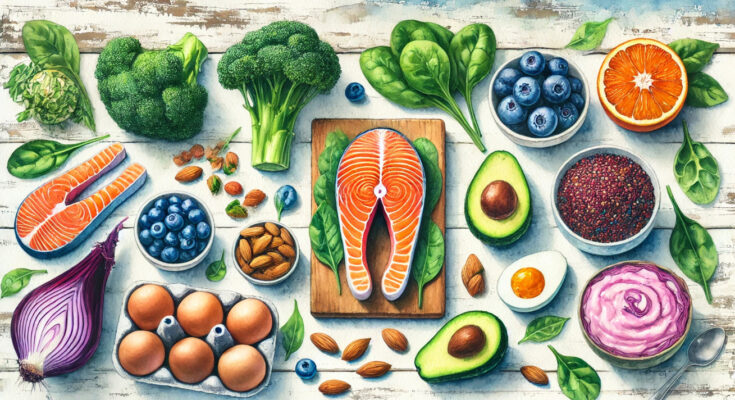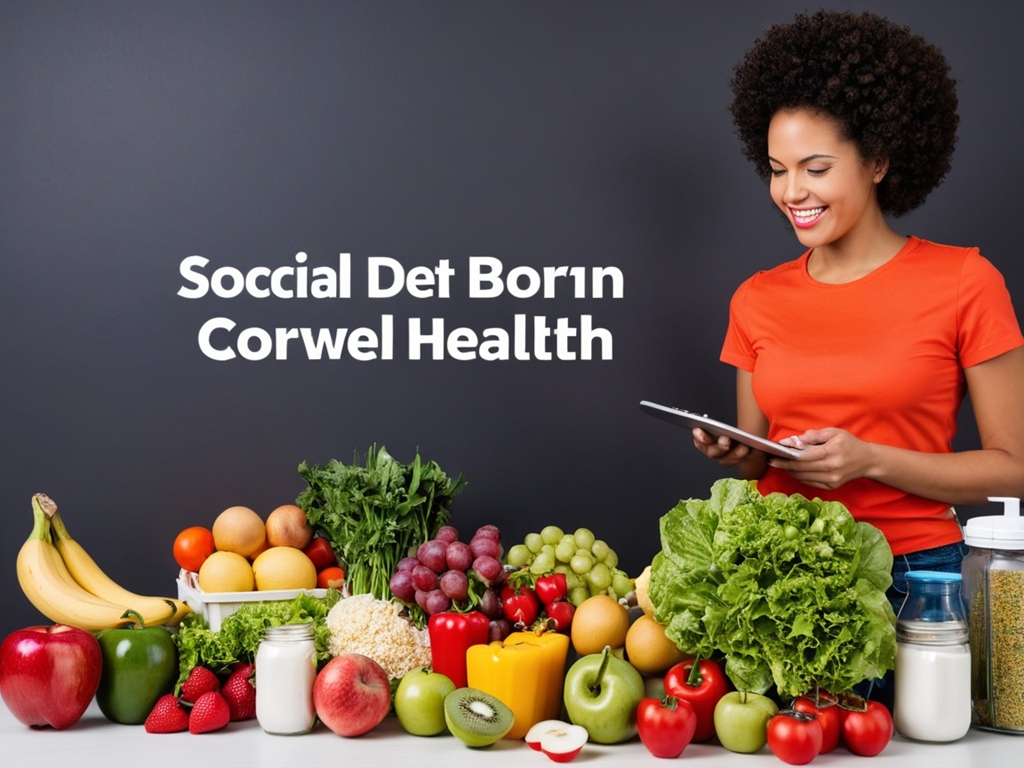What Are 10 Nutritious Foods?
What if your next meal could sharpen your focus, boost your immunity, and even add years to your life?
According to leading researchers from Harvard, UCSF, and the Mayo Clinic, nutrition isn’t just a lifestyle choice—it’s a long-game investment in your healthspan. And the ROI? Disease prevention, better mood, sustained energy, and sharper cognition.
Yet, despite having access to endless dietary information, most people still reach for convenience over nutrient-density. Fast fixes and fad diets crowd out real food—whole, nourishing, time-tested staples.
So let’s cut through the noise. This guide breaks down 10 of the most nutrient-dense foods on the planet, each vetted by science and recommended by nutritionists. Whether you’re overhauling your diet or just want smarter snack options, these ten picks are here to power your plate and upgrade your life.

The Top 10 Nutritious Foods
1. Leafy Green Vegetables
Quick Descriptor: Greens like spinach, kale, and arugula are nutrition royalty—rich, vibrant, and full of life-giving compounds.
Nutrition Breakdown: Packed with vitamins A, C, and K, plus calcium, iron, and antioxidants like lutein and beta carotene.
Health Impact: These greens help protect your cells from oxidative stress, improve bone strength, and may slow cognitive decline as you age. They’re also anti-inflammatory and excellent for heart health.
How to Eat It: Toss into salads, sauté with garlic and olive oil, blend into smoothies, or layer into sandwiches. Raw or cooked, greens are game-changers.
2. Whole Grains
Quick Descriptor: Carbohydrates done right—whole grains are fiber-rich and help sustain your energy.
Nutrition Breakdown: B vitamins, magnesium, zinc, and a hearty dose of dietary fiber.
Health Impact: Improve digestion, stabilize blood sugar, lower cholesterol, and reduce the risk of heart disease and stroke.
How to Eat It: Think oatmeal in the morning, quinoa bowls for lunch, or barley in soups and risottos. Whole grains also elevate homemade breads and baked goods.
3. Beans and Lentils (Legumes)
Quick Descriptor: Protein-packed and wallet-friendly, legumes are a plant-based powerhouse.
Nutrition Breakdown: Iron, magnesium, folate, plant-based protein, and fiber.
Health Impact: Regulate blood sugar, lower cholesterol, support gut health, and provide lasting satiety—making them ideal for weight management and heart health.
How to Eat It: Add to chili, mix into salads, blend into dips like hummus, or serve with rice for a complete protein combo.
4. Fatty Fish
Quick Descriptor: Omega-3-rich fish like salmon and sardines feed your brain and protect your heart.
Nutrition Breakdown: Omega-3 fatty acids (DHA and EPA), vitamin D, and high-quality protein.
Health Impact: Reduces inflammation, boosts brain function, supports mental health, and lowers the risk of heart disease.
How to Eat It: Grill salmon fillets, flake smoked trout onto toast, or snack on sardines with crackers and lemon.

5. Berries
Quick Descriptor: Tiny but mighty—berries are antioxidant bombs that taste as good as they are good for you.
Nutrition Breakdown: Vitamins C and K, fiber, and anthocyanins (potent antioxidants).
Health Impact: Linked to improved memory, reduced inflammation, and decreased risk of chronic diseases like cancer and heart disease.
How to Eat It: Sprinkle on yogurt, blend into smoothies, toss in salads, or just eat them fresh by the handful.
6. Nuts and Seeds
Quick Descriptor: Heart-friendly and brain-boosting, nuts and seeds are small bites with big benefits.
Nutrition Breakdown: Healthy fats (including omega-3s), vitamin E, protein, fiber, and magnesium.
Health Impact: Improve cholesterol levels, reduce inflammation, and support cognitive function. They’re also great for blood sugar control.
How to Eat It: Add almonds to your trail mix, stir chia into overnight oats, or sprinkle flaxseeds into your smoothie.
7. Sweet Potatoes
Quick Descriptor: Nature’s candy, sweet potatoes are nutrient-packed and naturally sweet.
Nutrition Breakdown: Beta carotene (vitamin A), vitamin C, potassium, and fiber.
Health Impact: Supports immune function, vision health, and digestive balance. Low glycemic index means longer-lasting energy.
How to Eat It: Roast them with cinnamon, mash them with olive oil, or cube them into hearty grain bowls.
8. Yogurt
Quick Descriptor: Creamy, cultured, and probiotic-rich—yogurt supports your gut and bones.
Nutrition Breakdown: Calcium, protein, vitamin B12, and live probiotics.
Health Impact: Promotes gut health, supports digestion, and strengthens bones. The probiotics can also enhance immune function.
How to Eat It: Go plain Greek with fruit and honey, blend into smoothies, or use as a base for dressings and dips.
9. Avocado
Quick Descriptor: Smooth, savory, and satiating—avocados deliver healthy fats with flair.
Nutrition Breakdown: Monounsaturated fats, fiber, potassium, and vitamins B, E, and K.
Health Impact: Supports heart health, lowers bad cholesterol, and may aid in weight management by promoting satiety.
How to Eat It: Spread on toast, slice into salads, blend into guacamole, or spoon straight from the peel.
10. Broccoli
Quick Descriptor: Crunchy and cruciferous, broccoli is a detox-friendly, immune-supporting veggie.
Nutrition Breakdown: Vitamins C and K, folate, fiber, and powerful phytonutrients like sulforaphane.
Health Impact: Supports detoxification, reduces cancer risk, and boosts immunity. Also great for digestion and skin health.
How to Eat It: Steam with lemon, roast with garlic, or toss into stir-fries and pasta dishes.
The Power of Eating Smart
Eating well isn’t about chasing the latest food trends—it’s about consistently choosing foods that are rich in nutrients and naturally diverse. These ten aren’t fads or gimmicks; they’re backed by decades of nutritional research and are accessible to almost everyone.
And no, they’re not “superfoods” in the marketing sense. They’re smart foods—the kind that work overtime for your body and mind.
Ready to start?
Try incorporating just three of these powerhouse picks into your meals this week. A handful of berries in your yogurt. Quinoa swapped in for white rice. A fistful of leafy greens sautéed with garlic. Smart eating starts with simple, intentional swaps.
FAQ
1. Why were these 10 foods chosen?
These foods aren’t just trendy—they’re backed by leading health institutions like UCSF and Mayo Clinic for their nutrient density, versatility, and long-term health benefits. This list is rooted in science, not hype.
2. Can I eat these foods if I have dietary restrictions?
Most of the foods listed—like leafy greens, whole grains, and legumes—are naturally gluten-free, dairy-free, and plant-based. If you have allergies or conditions like IBS, consult a dietitian to tailor your choices.
3. Is organic always better for these foods?
Not always. While organic options can reduce exposure to pesticides, the most important thing is to eat more whole, unprocessed foods—organic or not. Wash produce well and buy what fits your budget.
4. How do I start incorporating these foods into my diet?
Start small. Swap white rice for quinoa, toss berries into your yogurt, or try roasted broccoli as a side. Even one or two changes per week builds better habits over time.
5. Are these “superfoods” or just healthy picks?
“Superfood” is a marketing buzzword. These are smart foods—nutrient-rich, widely available, and proven to support health. Think of them as your everyday nutritional MVPs.




